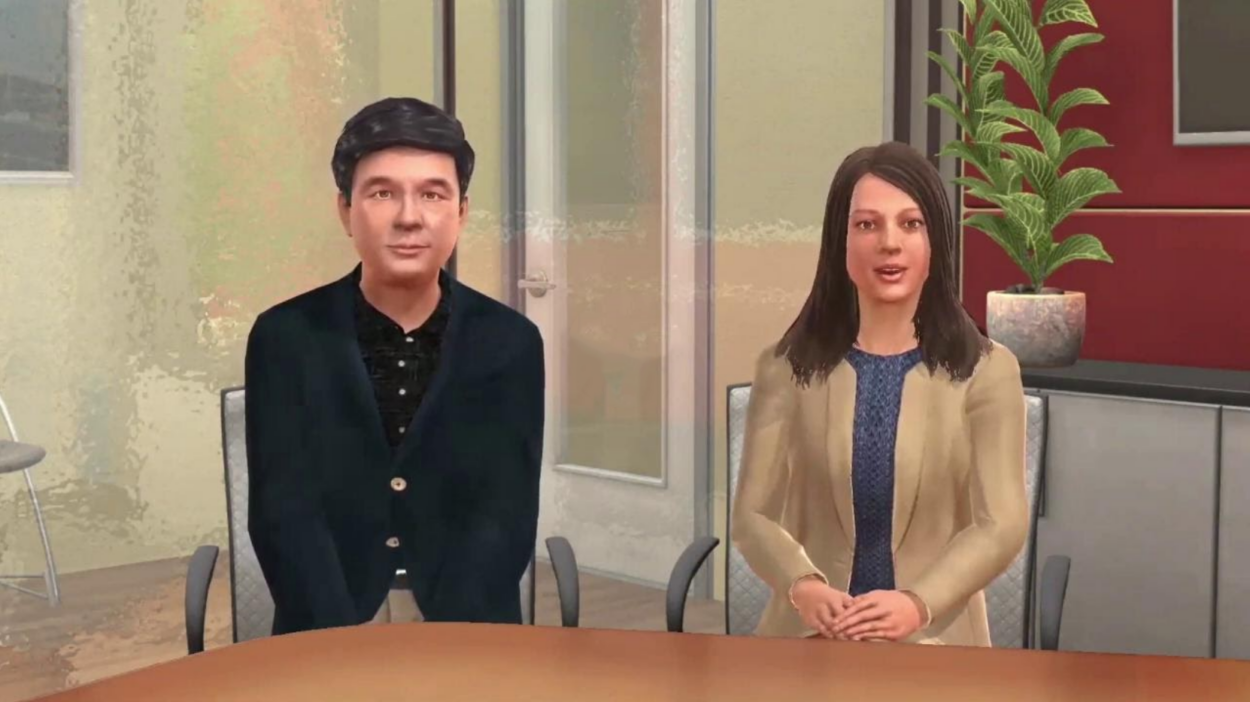How can student therapists get the training—and training hours—that they need to graduate and move towards being licensed, when a global pandemic has shut down so many training sites? A year ago, every therapy program in the country was forced to grapple with this question. And now a team at Antioch University Seattle has published in the flagship journal of marriage and family therapy an article laying out a new model that shows great promise in resolving these problems—and that may be quite useful moving forward.
The article’s lead author, Dr. Jennifer Sampson, says that “the model we developed has some real possibility to gain traction as a unique training modality…” Dr. Sampson serves as chair of the Couple and Family Therapy program at Antioch University Seattle (AUS), where the new model was piloted.
The authors describe the model as integrating a “teaming therapy model with virtual technology using mixed-reality simulation software.” In this new format, eight student therapists gather over teletherapy software to practice a series of simulated therapy sessions under the guidance of a supervising therapist. This group setting is an efficient use of supervisory resources, and the use of a simulated situation rather than work with real clients offers the benefits of reducing risk during training and giving the supervisor the opportunity to pause a session to provide feedback in the moment. As Dr. Sampson says, it’s a unique training modality that helps “therapists to both learn specific models of therapy practice in depth, while allowing live, in-the-moment feedback from their supervisors.”
Overall, this new model has proven to be a real success and bright point during a challenging year. Students have reacted positively, other universities are already adopting the model in their own training programs, and the article laying out the model has now been published as “Integration of teaming therapy and mixed-reality simulation as remote learning modality for couple and family therapy graduate training programs” in the January, 2021 edition of the Journal of Marital and Family Therapy—the field’s flagship publication, which reaches a wide and influential readership.
This last part is particularly exciting for Dr. Rachel Hughes, who was one of the article’s co-authors, along with Dr. Laura Wallace and Dr. Michelle Finley. Dr. Hughes, who also teaches as core faculty in the AUS Couple and Family Therapy Program and serves as its Director of Clinical Training, says “[T]his is a journal that was instrumental in my development as a therapist.” As she says about being published there: “How awesome!”
A Project Born of Necessity
When the pandemic came to Washington State in early spring of 2020, the state was among the first in the nation to institute a shelter in place order. This order prohibited non-essential gathering, which was taken to include most in-person therapy sessions. This was a necessary public health measure, but it had the unfortunate impact not only of cutting many people off from the mental health treatment they needed but also of leading to the shutdown of many training sites that connect student therapists with clients in need of therapy. These sites did their best to make changes to accommodate the new situation, and the Community Counseling and Psychology Clinic at AUS swiftly transitioned to a teletherapy model. However, even with these changes there remained a deep need for students to practice therapy with supervision.
In Washington, to become licensed as a Marriage and Family Therapist (MFT), student therapists must accrue 1,000 direct client contact hours and 200 hours of supervision. Part of what a program like the Couple and Family Therapy program at AUS offers is that students can count their internship hours toward this requirement. “Our graduates get to count 500 clinical hours and 100 hours of supervision toward their licensure hours,” explains Dr. Sampson.
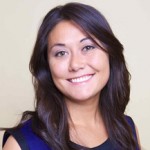
However, for students to gain this head-start on licensure, they need to actually complete these hours of direct client contact and supervision. In an in-person clinic, supervision can be carried out with the use of one-way mirrors and secure video recordings. But all of this was more difficult—and uproven—in the context of teletherapy.
Dr. Sampson and her collaborators initiated the pilot program into this context of great demand for clinical supervision but limited resources and venues in which it could be carried out.
An Innovative Mix of Existing Models
To come up with this new model, the researchers first decided to employ a teaming therapy framework, where a group of students actively serve as part of the therapeutic system, and each hour is also observed live by a clinical supervisor. This would allow those hours to count for both a direct client contact hour and a supervision hour. It would also permit eight students to simultaneously accrue those hours while under the supervision of only a single teacher, thereby maximizing the efficiency of the supervisor’s time.
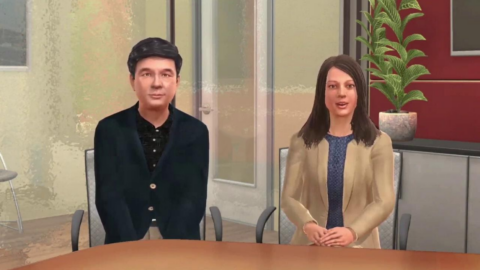
The researchers also decided that it would make the most sense to use reality simulation software, which would allow for the student therapists to train without the risks and liability that come when students work with actual clients. The software they used was made by the American Association of Marriage and Family Therapy (AAMFT), which supported this research with a grant. However, the AAMFT software was designed to simulate practice for one therapist at a time with just a single client, early in the therapeutiful process. In order to adapt it to their uses, the researchers worked with the AAMFT simulation team to re-envision the simulation technology and how to apply it in teaming therapy.
All of this innovation was completed in consultation with the Commission on Accreditation for Marriage and Family Therapy Education (COAMFTE), the accrediting body that governs MFT graduate programs. COAMFTE had encouraged schools facing the pandemic to exercise creativity in helping students continue to make timely progress to degree completion, and it was this flexibility that allowed them to pilot a new and innovative model so quickly.
For a teaming modality, the researchers decided to take guidance from the Milan Systemic Model, a model first invented in the 1960s and ‘70s wherein several members from a team of therapists works with a family while the other team members observe and then the team as a whole gathers to reflect on what they have observed. As the authors write in the paper, “The use of a teaming therapy approach in the authors’ conceptual model filled many logistical and pedagogical needs for the program, including an opportunity to make the supplemental experience of accruing clinical and supervision hours efficient for all participants.” As Dr. Hughes explains, “Milan is a hugely flexible model for practicing the core skills of being a systemic therapist.”

The use of Milan Systemic Family Therapy as the guiding theory of the practice was also useful because its brief format allows for targeted systemic skill building for students. According to the article, “The goal of a Milan family therapist is to identify the family premises maintaining problematic interaction sequences, disrupt homeostasis in the client system by asking circular questions, and prescribe paradoxical homework each session in order to de-pathologize any individual members of the family.” These are widely applicable skills across therapeutic modalities. Says Dr. Sampson, “Many of the techniques are standard therapy practices that are still used today in systemic therapy.”
Dr. Hughes is equally enthusiastic. “If students want to be excellent couple and family therapists,” she says, “they should clearly understand the underpinnings of this model.”
A Training Model With a Future
Moving forward, there are signs that this new model may grow beyond being a pilot at AUS. For one, the publication in the Journal of Marital and Family Therapy is by its nature preliminary: it “describes the conceptual, systemic basis for the learning modality, steps for implementation, benefits of the model, and the authors’ plan for further evaluation.”
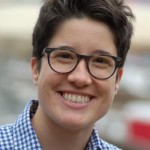
As to that evaluation, Dr. Sampson reports that “Early results are positive!” The research team is currently working on analyzing data from the student participants and the control group (students who did not participate in the pilot project). They are intending to submit their results for publication in the coming months, but Dr. Sampson has already been impressed with how successful it seems to have been. She explains, “Students overwhelmingly report high satisfaction with their participation and learning with the simulation model, and all report that they would recommend it to their classmates and other students.”
This is good news, because it seems that teletherapy will be here to stay, not just as a model for delivering care but also as a key tool for training the next generation of therapists. Even before the pandemic hit, it was a goal of Antioch and many other couple and family therapy programs to develop competency with teletherapy. “The pandemic sort of forced our profession’s hand to speed up the process by about 10 years,” says Dr. Sampson. Now teletherapy is almost universally practiced—at least in part—in practice settings. And accreditation standards have shifted along with this change. Where before, teletherapy hours were not permitted to count as direct client hours, now they do—and this seems unlikely ever to shift back.
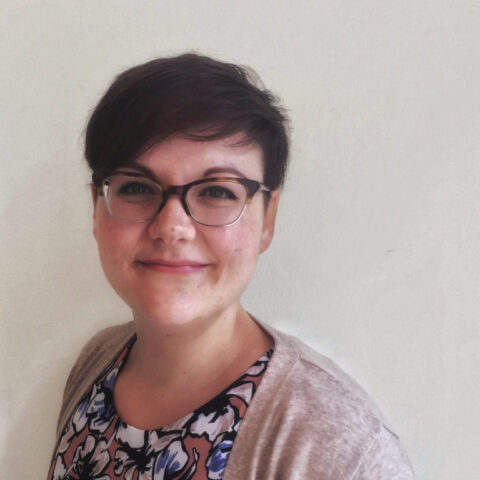
Dr. Hughes says, “It has been an incredible journey to watch our interns adapt to telehealth.” She marvels that some students will soon graduate having never yet seen a client in person—something unheard of in traditional MFT programs.
And with the publication and increasing adoption of this new model—perhaps it will come to be called the Antioch Simulation Model—the widespread shift to teletherapy might not be such a bad thing as the accrediting bodies feared. In fact, it might just be a good answer to a hard question.

